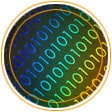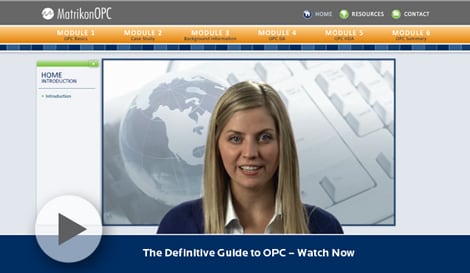|
|
OPC Data Access, or just OPC DA, provides a standard
way to access real-time data from process control hardware
and software. Benefits include:

OPC DA standardizes real-time data access
Communication between all devices and applications is consistent
OPC DA is available for every major process control system
OPC DA secures scalability
With OPC DA, the communication between all devices and
applications is consistent. OPC DA servers for PLCs, DCSs, or other devices
provide data in exactly the same format! Similarly, HMIs, Process Historians and
other applications accept OPC data in the same format. This allows all of your
process control hardware and software to freely exchange data, providing
enterprise-wide interoperability.
OPC is a powerful connectivity method. As a result, OPC servers are
available for almost every major device and software application on
the market today. Similarly, almost every process control application
supports OPC in the form of an OPC Client connection.
Major manufacturers have adopted OPC DA as their communication
standard for the transfer of real-time data to secure their system
scalability. Selecting OPC DA as your communication standard
allows you to easily expand your system as needed for years to come.
OPC DA began with OPC DA 1.0, followed shortly by OPC DA 1.0a. A later
specification was OPC DA 2.0, with minor clarifications appearing
periodically, such as OPC DA 2.01, 2.02, 2.03, etc. The most recent
specification is OPC DA 3.0. Vendors are encouraged to keep their
software current, so check with your vendor about the specific
version that they support.

OPC DA Details
Used only to read and write REAL-TIME data
Provides access to single-value data items called "points"
Each point includes a value, a quality and a timestamp
Only uses latest values, not past values
OPC DA is used to read and write real-time data exclusively.
To access previous, or historical values, you must use
OPC HDA (Historical Data Access).
Typical questions posed by an OPC client and answered by an OPC server
are "What is the current flow rate of FIC101?", "Was this reading
reliable?", and "At what time was the latest flow read?"
OPC DA Timestamps
OPC DA servers provide three attributes for every point: a value, a
quality and a timestamp.
OPC specifies that a timestamp must be provided for each point, but it
does not specify where the timestamp must come from. So where does
the timestamp come from?
Sometimes a timestamp is not available from the device. For example,
Modbus does not provide a timestamp from the PLC. In this situation,
the OPC server provides its own timestamp. But some device vendors do
provide a timestamp with each value. So when the OPC server receives a
reading, it also receives the timestamp from the PLC and passes it on.
An OPC server may be designed to ignore a timestamp, even if one is
available. Since OPC does not specify where the timestamp must come
from, sometimes OPC server vendors choose to ignore the device timestamp
because this takes less development effort. Always ask your vendor
where their timestamp comes from.
OPC DA Summary
So to summarize, OPC DA provides standard access to real-time data and
therefore provides open connectivity. OPC systems benefit from true
interoperability and scalability that are used for monitoring and supervisory
control. OPC enables applications to exchange, that is read and write,
the latest values and not past values. If you need to access historical
data, you must use OPC Historical Data Access (HDA).
OPC specifies that a timestamp must be provided for each point, but it
does not specify where the timestamp must come from. So where does
the timestamp come from?
OPC Data Access
Specification 3.0 [PDF 7,138 kb].
Click here to
visit the MatrikonOPC DA Server section.
|
|